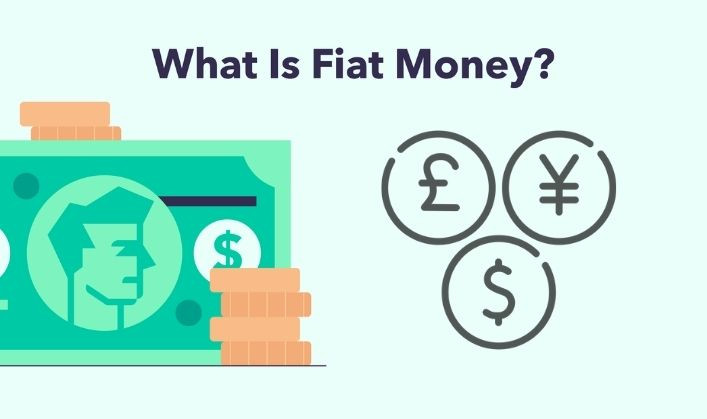7 November 2025
What Is Fiat Money?
Fiat money is a crucial element of modern economies, serving as the primary medium of exchange and store of value. Unlike commodity money, which derives its value from intrinsic worth (e.g., gold or silver), fiat money has no intrinsic value and is declared legal tender by a government or central authority. This article explores the concept, history, and importance of fiat money, shedding light on its role in sustaining the stability and growth of economies worldwide.
Bybit offer: Deposit $50, and GET 10 USDT (withdrawable)!
1. Understanding Fiat Money
Fiat money is a form of currency that holds value solely because the government or issuing authority has declared it as acceptable for transactions within its jurisdiction. This means that fiat money is not backed by any physical commodity but relies on the trust and confidence of users and the stability of the issuing government. The value of fiat money is maintained through various mechanisms, including monetary policy, fiscal policy, and the overall economic performance of the country.
Also read: What Are Dynamic NFTs (DNFTs)?
2. Historical Evolution of Fiat Money
In ancient China, during the Tang Dynasty in the 7th century, they pioneered the concept of paper money, marking the early roots of fiat currency. But it wasn't until the 17th century when European nations adopted paper money to enhance trade efficiency. As time passed, fiat money gained popularity, leading governments to move away from the gold standard, which directly linked currency to gold reserves. This shift empowered central banks to better manage economic conditions and goals by adjusting the money supply. The evolution of fiat money transformed economies, providing a more adaptable and human touch to the way we exchange value.
3. The Importance of Fiat Money in Modern Economies
A. Facilitating Exchange and Trade: Fiat money enables seamless transactions by serving as a universally accepted medium of exchange. Its widespread acceptance makes it possible for individuals, businesses, and governments to conduct daily economic activities efficiently. By eliminating the need for bartering and commodity-based exchanges, fiat money significantly simplifies the process of trade and commerce.
B. Monetary Policy Flexibility: Central banks utilize fiat money as a tool to implement monetary policies aimed at achieving specific economic objectives. Through measures such as adjusting interest rates and controlling the money supply, central banks can influence inflation, unemployment, and overall economic growth. This flexibility is particularly crucial during economic downturns, as it allows governments to stimulate the economy and support employment.
C. Store of Value: While fiat money lacks intrinsic value, it serves as a reliable store of value due to the stability and trust associated with the issuing government. In comparison to perishable goods or commodity-based currencies susceptible to fluctuations in value, fiat money provides individuals and businesses with a stable means of preserving wealth and assets over time.
D. Debt and Credit: Fiat money also plays a pivotal role in facilitating borrowing and lending activities. Governments, businesses, and individuals can access credit and loans denominated in fiat money, which fosters investment and economic growth. Additionally, governments can issue bonds denominated in their fiat currency to finance public projects and manage fiscal deficits.
4. Challenges and Criticisms of Fiat Money
A. Inflation Risk: One of the primary concerns with fiat money is the risk of inflation. When central banks increase the money supply excessively or inappropriately, it can lead to rising prices for goods and services. This erodes the purchasing power of money, reducing the standard of living for consumers.
B. Trust and Confidence: Fiat money heavily relies on the trust and confidence of its users. If citizens lose faith in the stability or legitimacy of their currency, it can lead to a currency crisis or even hyperinflation. Therefore, maintaining public confidence in the currency is critical for the sustained functioning of the economy.
C. Counterfeiting and Fraud: Fiat money is susceptible to counterfeiting and fraudulent activities. To combat this, governments invest significant resources in designing secure banknotes and employing advanced technologies to prevent counterfeiting.
Conclusion
Fiat money has become an integral part of modern economies, serving as the backbone of financial systems worldwide. Its importance lies in its ability to facilitate economic transactions, enable effective monetary policies, and act as a stable store of value. While not without challenges, continued trust and confidence in fiat money are crucial for maintaining economic stability and growth in the global economy.
Disclaimer: The author’s thoughts and comments are solely for educational reasons and informative purposes only. They do not represent financial, investment, or other advice.






